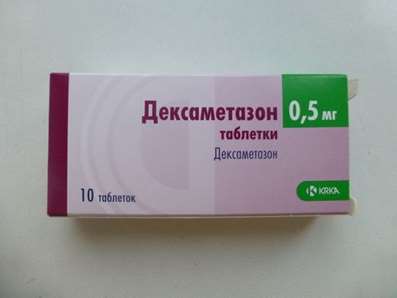Instruction for use: Pabal
I want this, give me price
ATX Code H01BB Oxytocin and its analogues
Active substance: Desmopressin
Pharmacological group
Generic activity stimulator - oxytocin preparation [Hormones of the hypothalamus, pituitary gland, gonadotropins and their antagonists]
Generic activity stimulant - oxytocin preparation [Uterotonics]
Nosological classification (ICD-10)
O82 Childbirth singleton, delivery is by caesarean section
O90.8 Other complications of the postpartum period, not elsewhere classified
Lochiometer, Pyelonephritis after childbirth
Composition
A solution for intravenous and / m administration of 100 mcg / ml 1 amp.
active substance:
Carbetocin 100 μg
(Oxytocin activity - about 50 IU of oxytocin / ml)
Auxiliary substances: sodium chloride - 9 mg; Acetic acid ice - to pH 3.8; Water for injection - up to 1 ml
pharmachologic effect
Pharmacological action is a stimulating generic activity.
Pharmacodynamics
Carbetocin (1-deamino-1-monocarba- (2-0-methylthyrosine) -oxytocin) is a long-acting oxytocin agonist.
Like oxytocin, carbetocin selectively binds to oxytocin receptors in the uterine smooth muscle, stimulates rhythmic uterine contractions, increases the frequency of existing contractions and increases the tone of the uterine musculature. In the postpartum uterus, carbetocin increases the speed and strength of spontaneous uterine contractions. After the introduction of carbetocin, the contractions of the uterus become more frequent, and after two minutes a sharp contraction occurs. A single dose of carbetocin (100 mcg) is sufficient to maintain adequate uterine contractions that prevent uterine atony and heavy bleeding, which can be compared with the administration of oxytocin for several hours.
Pharmacokinetics
Distribution. Cmax in plasma is achieved within 15 min after administration and is (1035 ± 218) pg / ml within 60 min. Carbetocin penetrates into breast milk, while its Cmax is approximately 56 times lower than in blood plasma after 120 minutes.
Metabolism. By analogy with oxytocin, carbetocin is hydrolyzed by proteinases.
Excretion. Carbetocin excretion has a two-phase character with linear pharmacokinetics in the dose range of 400-800 μg. T1 / 2 is about 40 minutes. The renal clearance of the unmodified form is low, less than 1% of the administered dose is excreted by the kidneys unchanged.
Indications
Prevention of atony of the uterus after the extraction of the child during operative delivery by cesarean section;
Prevention of atony of the uterus in parturient women with an increased risk of postpartum hemorrhage after delivery through the natural birth canal.
Contraindications
Hypersensitivity to carbetocin, oxytocin, or to one of the components of the drug
Period of pregnancy and childbirth until the birth of a child.
Impaired liver or kidney function;
Serious violations of CAS (rhythm and conduction disorders);
epilepsy;
Pabal is contraindicated for induction of labor.
With caution: carbetocin has a certain anti-diuretic effect. Therefore, the possibility of developing hyponatremia with the use of the Pabal preparation should be taken into account, especially in patients receiving large amounts of administration. It is necessary to pay attention to the first signs of hyponatremia (drowsiness, apathy, headache) to prevent seizures and coma.
Pabal should be used with caution in migraine, bronchial asthma and cardiovascular diseases, as well as in any conditions in which a rapid increase in the volume of extracellular fluid can provoke complications associated with hyperhydration. Decision on the use of the drug Pabal the doctor should take into account the ratio of risk-benefit in each case. Continuous monitoring of blood pressure is necessary in patients with gestosis of the second half of severe pregnancy, eclampsia and preeclampsia.
pregnancy and lactation
The use of Pabal is contraindicated during pregnancy and childbirth until the birth of the child. A small amount of carbetocin can penetrate the mother's breast milk and then be destroyed by the enzymes of the newborn.
Side effects
The nature and frequency of side effects with carbetocin are comparable with the side effects of oxytocin.
From the hematopoietic and lymphatic system: often (≥1 / 100 and <1/10) - anemia.
From the nervous system: very often (≥1 / 10) - headache, tremor; Often (≥1 / 100 and <1/10) - dizziness.
From the CCC: very often (≥1 / 10) - increased blood pressure, hyperemia of the face
On the part of the respiratory system: often (≥1 / 100 and <1/10) - chest pain, shortness of breath.
From the gastrointestinal tract: very often (≥1 / 10) - nausea, abdominal pain; Metallic taste in the mouth, vomiting.
From the skin: very often (≥1 / 10) - itching.
From the musculoskeletal system: often (≥1 / 100 and <1/10) - back pain.
General reactions: very often (≥1 / 10) - a feeling of heat; Often (≥1 / 100 and <1/10) - chills, pain at the injection site.
Interaction
There were no cases of drug interaction with analgesics, antispasmodics and drugs used for epidural or spinal anesthesia. However, do not mix Pabal in one syringe with other drugs.
Since carbetocin is an analogue of oxytocin, there may be cases of interaction characteristic of oxytocin. A sharp rise in blood pressure is possible with the administration of Pabal 3-4 h after the prophylactic use of vasoconstrictor in combination with caudal-conductive anesthesia. It is also possible to increase AD and enhance the effect of carbetocin in the joint use of the drug Pabal with ergot preparations (methylergometrine).
It is not recommended to use Pabal simultaneously with PG in connection with the possible increase in the action of carbetocin. If nevertheless their simultaneous application is necessary, then the patient should be constantly monitored.
Means for inhalation anesthesia (halothane, cyclopropane) can enhance the hypotensive effect and reduce the effect of the drug Pabal on the uterus. With the simultaneous use of the drug Pabal with oxytocin, the development of arrhythmia is possible.
Dosing and Administration
Pabal is given once iv or in / m only after the birth of the child. Do not use the drug again. Do not mix Pabal with other drugs in one syringe. Do not use the drug if insoluble particles are observed in the solution or the solution changes color. The unused preparation is subject to destruction.
During a caesarean section, a single dose of Pabal (100 μg / ml) is given immediately after the removal of the baby, preferably before the placenta is removed.
When delivering through the natural birth canal, a single dose of Pabal (100 μg / ml) is injected into the upper thigh, immediately after the discharge.
Overdose
Symptoms: cases of overdose with a single injection of the recommended dose of 100 mcg / ml are very rare. The introduction of the drug Pabal in a dose of 800 mcg / ml can cause tachycardia. Violation of the recommended dosing regimen can provoke myometrium hypertonicity regardless of the presence or absence of hypersensitivity to carbetocin or postpartum hemorrhage. In severe cases, an overdose of Pabal may lead to hyponatremia and hyperhydration, especially when combined with a simultaneous high volume of IV infusion of solutions administered during delivery.
Treatment: is symptomatic and maintenance therapy. If signs or symptoms of an overdose occur, the woman in labor should provide adequate oxygenation. When water intoxication, it is necessary to limit the flow of fluid, stimulate diuresis, correct electrolyte disturbances, and pay attention to the clinical signs of hyponatremia (drowsiness, apathy, headache) to prevent seizures and coma.
special instructions
Pabal is given in / m or / in only in specialized obstetric departments, respectively equipped and with a qualified and experienced medical staff.
The use of Pabal at any stage of childbirth until the birth of a child is prohibited, since the stimulating effect of carbetocin on the uterus after a single injection of 100 mcg / ml lasts several hours, in contrast to the rapid decrease in the effect of oxytocin. In the case of unceasing uterine bleeding after the use of Pabal, such reasons as undivided fragments of the placenta and bleeding disorders should be excluded. Pabal is introduced only once. In the case of hypotension or atony of the uterus, accompanied by heavy bleeding, the possibility of using oxytocin and / or ergometrine should be considered.
Since Pabal has a certain anti-diuretic effect, it is necessary to identify the first signs of hyponatremia (drowsiness, apathy and headache) to prevent seizures and coma.
Impact on the ability to drive vehicles and mechanisms that require increased concentration. Not applicable, given indications for use.
Form of issue
Solution for intravenous and intramuscular injection, 100 μg / ml. 1 ml of solution in 1 ml ampoule of colorless glass type I, with possible color coding as a color point and / or one or more rings. At 5 amp. In a cell box in a cardboard box.
Terms of leave from pharmacies
On prescription.
Storage Conditions
At a temperature of 2-8 ° C (do not freeze).
Keep out of the reach of children.
Shelf life
2 years.
Do not use after the expiry date printed on the package.

 Cart
Cart





